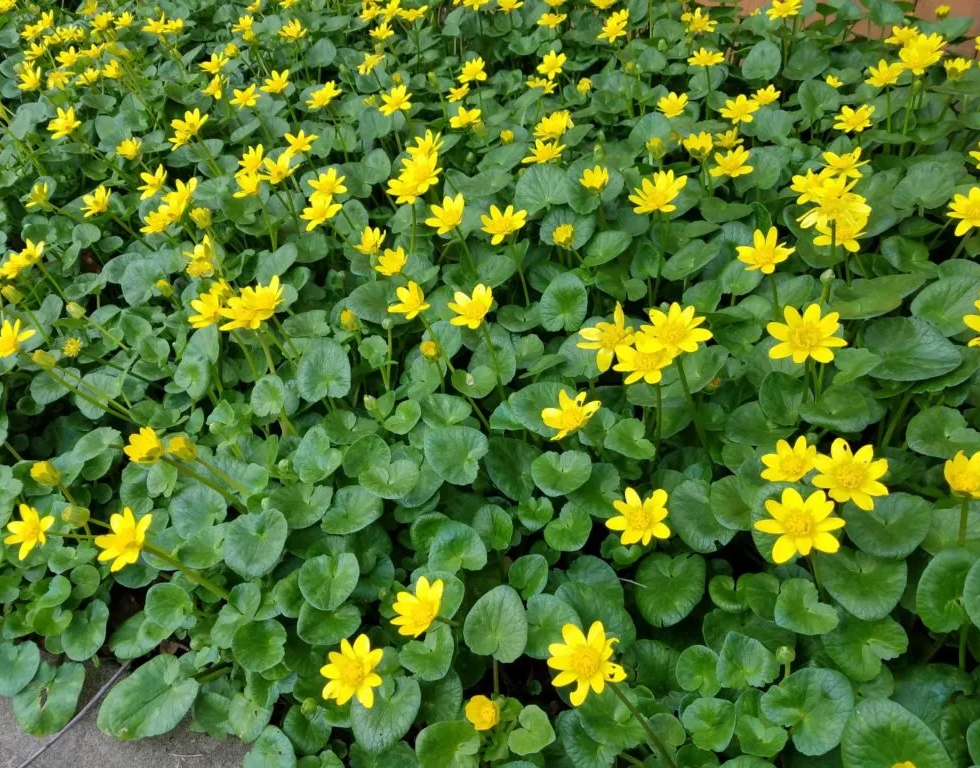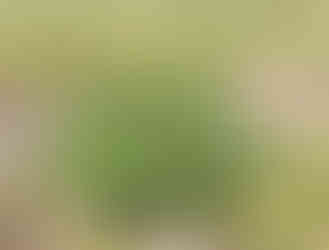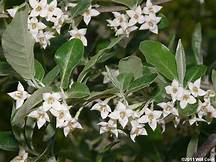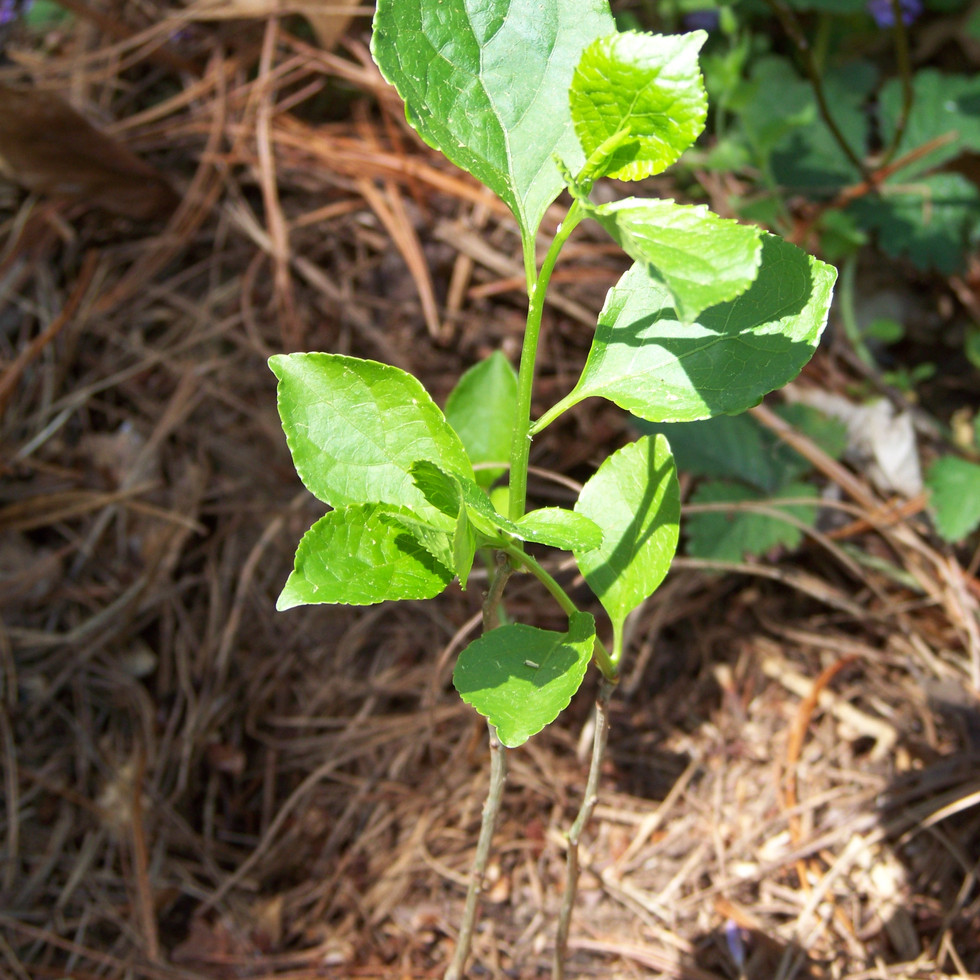The pursuit of insect-resistant ornamental landscape plants exemplifies the law of unintended consequences. Over the last two hundred years, homeowners have separated their property from native wildlife with expansive lawns, herbicides, insecticides, and plants from Asia and Europe.
Why are these non-native plants insect-resistant?
The answer is that plants from other continents are not part of our ecosystem. These introduced plants do not have an evolutionary relationship with insects in our native habitats. Lacking natural enemies, alien plants escape cultivation and dominate our wetlands, meadows, and forests.
The average homeowner cannot impact headline-grabbing invaders like murder hornets, snakehead fish, or feral hogs. However, homeowners can address the alien and invasive plants in their landscaping through awareness, research, and replacement.
Before we launch our recovery plan, here is our standard for invasive plants.
Invasive plants characteristics:
Not native to an area
Spread quickly
Destroy and threaten native ecosystems
Cause economic or environmental harm or harm to human health
Invasive plants come in all forms:
Trees
Shrubs
Vines
Grasses
Flowers
To protect property and local habitats from invasive ornamentals, here are three strategies homeowners can exercise:
1) Before purchasing, research the plants you are considering.
Use your mobile phone to research plants under consideration at the garden center—for example, search ("Plant name native range"). If the plant is not native to the United States, find a native alternative that meets the same landscaping need. This 30-second exercise prevents committing to an unproductive or destructive plant that will replace later.
2) Audit the plants in your landscaping.
Know your enemy and create a restoration plan!
3) Recognize the seedlings of invasive species
You will save time, money, and effort by removing alien invasive plants as seedlings.
Identifying invasive species allows you to triage your restoration plan. Of course, replacing all invasive plants in one season is unrealistic, but over time, you can pace the removal of invasives and replace them with natives.
Below are some common invasive plants found in the northeastern United States:
Lesser Celandine
Origin: Western Asia, Europe
Status: Not available for purchase
Threat: Also known as "figwort," "fig buttercup," and "pilewort," lesser celandine is an exotic spring ephemeral that forms large, dense patches on the forest floor, displacing and preventing native plants from co-occurring. Lesser celandine leaves recede in late spring, leaving a dense underground network of roots and tubers.
Removal: Removing lesser celandine requires persistence. Hand digging is practical for minor infestations. Remove the entire plant (root material, bulblets, and tubers). Do not compost uprooted plant material.
Native Alternatives: celandine poppy, wild ginger, ragwort, marsh marigold
Top: Early spring emergence
Bottom: Infestation (photo by photo-by Sam Leininger)
English Ivy
Origin: Western Asia, Africa
Status: Available for purchase
Threat: English ivy is an aggressive invader threatening all levels of vegetation. It envelops tree branches preventing photosynthesis, eventually fatal to the tree. English ivy also carries a harmful pathogen to native elms, oaks, and maples.
Removal: Roots travel underground—Uproot vines when soil is moist. Remove from the tree, if possible.
Native Alternatives: American wisteria, Dutchman's pipe, trumpet vine, native honeysuckle
Personal Note: After a year-long battle with English ivy, I have declared "victory" for now...
Japanese Barberry
Origin: Japan
Status: Available for purchase
Threat: Each Japanese barberry plant produces 200,000 seeds displacing many native herbaceous and woody plants. It has escaped cultivation and dominates native plants in wetlands, woodlands, and meadows. Japanese Barberry also provides sanctuary for deer ticks, carriers of Lyme disease.
Removal: Uproot vines when soil is moist. Wear gloves to protect your hands from spiny stems.
Native Alternatives: summersweet, red chokeberry, dwarf fothergilla, Virginia sweetspire, winterberry
I found it in my yard this year despite never planting Japanese Barberry. Early identification made the young Japanese Barbary plants easier to remove.
Tree-of-Heaven
Origin: China
Status: Available for purchase in some states.
Threat: The tree-of-Heaven is the host plant to the invasive Spotted Lanternfly, which poses a severe agricultural threat to Mid-Atlantic hardwood and fruit trees. The tree-of-heaven is a prolific seeder that establishes dense growth, crowding out native trees. Moreover, tree-of-heaven releases herbicidal chemicals, which suppress native plants' growth.
Thirty states have banned the sale of tree-of-heaven.
Removal: Because of its threat to wildlife, agriculture, and property, homeowners should prioritize the tree-of-heaven for removal.
Native Alternatives: Native oaks, sugar maple, staghorn sumac, walnut
Multiflora Rose
Origin: China, Korea, Japan
Status: Considered a noxious weed in many states. Not readily available for purchase
Threat: Multiflora rose produces large numbers of fruits (hips) eaten and dispersed by birds. It creates a dense thicket blocking native shrubs and herbs from establishing.
Removal: Manual or mechanical removal. Because of long-lived seeds in the soil, multiple removal treatments are necessary.
Native Alternatives: buttonbush, New Jersey tea, summersweet, and elderberry
Japanese Honeysuckle
Origin: East Asia
Status: Available for purchase
Threat: Japanese honeysuckle is a fast-growing vine that twines around stems of shrubs and herbaceous plants, forming large tangles that smother and kill native plants. It also kills shrubs and saplings by girdling.
Removal: Remove by hand when the soil is moist.
Native Alternatives: Dutchman's pipe, trumpet vine, Passionflower, American wisteria
Autumn Olive
Origin: Asia
Status: Available for purchase
Threat: Autumn olive thrives in a variety of moisture and soil conditions. It threatens native ecosystems by displacing native plant species, creating dense shade, and interfering with natural plant succession and nutrient cycling.
Removal: Remove young plants by hand when the soil is moist. Established plants require frequent mowing after cutting the plant to ground level.
Native Alternatives: serviceberry, winterberry, spicebush, ironweed
Oriental Bittersweet
Origin: Eurasia
Status: Not available for purchase
Threat: Oriental bittersweet is a deciduous, climbing, woody vine growing up to 60 feet and 4 inches in diameter. Its thick vines overtake shrubs and trees, killing them by girdling and uprooting due to the vines' excessive weight.
Removal: Remove young plants immediately (See Bottom Picture). Clip woody vines at ground level and remove them from trees if possible.
Native Alternatives: Virginia Creeper, Crossvine, Dutchman's pipe, Passionflower
Left: Foraging birds disperse oriental Bittersweet seeds. To reduce the spread of oriental bittersweet, remove the plant before the berries are set.
Left: Oriental bittersweet seedling.
Giant Hogweed- Do not touch this plant!
Origin: Eurasia
Status: This hazardous plant is not available for purchase.
Threat: Giant hogweed is a dangerous plant designated as a federal noxious weed due to its toxic sap that causes skin sensitivity to UV radiation, blistering, and severe burns.
Removal: Do not cultivate, plant, purchase, or transplant this giant hogweed. If found, notify your state Department of Agriculture of the exact location and request assistance with control.
Butterfly Bush
Origin: Eurasia
Status: Available for purchase in most states. Banned in Oregon
Threat: The butterfly bush is an attractive, seductive landscape addition. It is considered invasive because of its prodigious reproductive ability. According to a study conducted at Pennsylvania's Longwood Gardens, one butterfly bush flower spike contains 40,000 seeds.
The seeds, dispersed by wind, create a competitive advantage for butterfly bushes vs. native shrubs.
While the butterfly bush helps pollinators in one stage of their development, native alternatives are a natural nectar source and support breeding activities.
Removal: The butterfly bush's shallow root system makes removing by hand easy
Native Alternatives: American wisteria, ironweed, coneflower, buttonbush, cardinal flower
Personal note: In 2021, I removed all the Butterfly Bush from my property. My landscape now features native shrubs like serviceberry, chokeberry, and elderberry.
Purple Loosestrife
Origin: Eurasia
Status: Available for purchase except for Minnesota, Wisconsin, and Illinois
Threat: Purple loosestrife displaces wetlands and biodiversity by outcompeting native species
Removal: Young purple loosestrife plants may be pulled by hand, preferably before the seed set. Established Purple Loosestrife requires manual or mechanical removal.
Native Alternatives: blazing star, blue vervain, Canada germander, cardinal flower, and ironweed
Burning Bush
Origin: Northeastern Asia, Japan, and Central China
Status: Available for purchase
Threat: Burning bush displaces native plants in forests, coastal scrublands, and prairies, forming dense thickets.
Removal: Pull seedlings and young plants by hand when the ground is moist. Established burning bushes can be cut to the ground and mowed several times after re-sprouting.
Native Alternatives: For fall color- Red chokecherry, viburnum, high bush blueberry, and fothergilla.

The invasive plants described here are a few of hundreds of species that threaten native habitats. Before committing to a plant, do your research! There is always a native plant that will serve the same aesthetic function while providing local wildlife food, cover, and breeding opportunities.

Note: the pictures in this article are downloaded from various invasive species educational sites. I have created a gallery of the alternative native species mentioned in this blog:
If you would like more information, here are some helpful websites:






























































